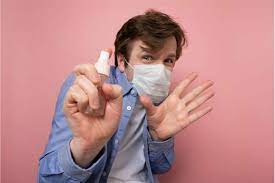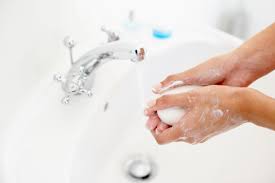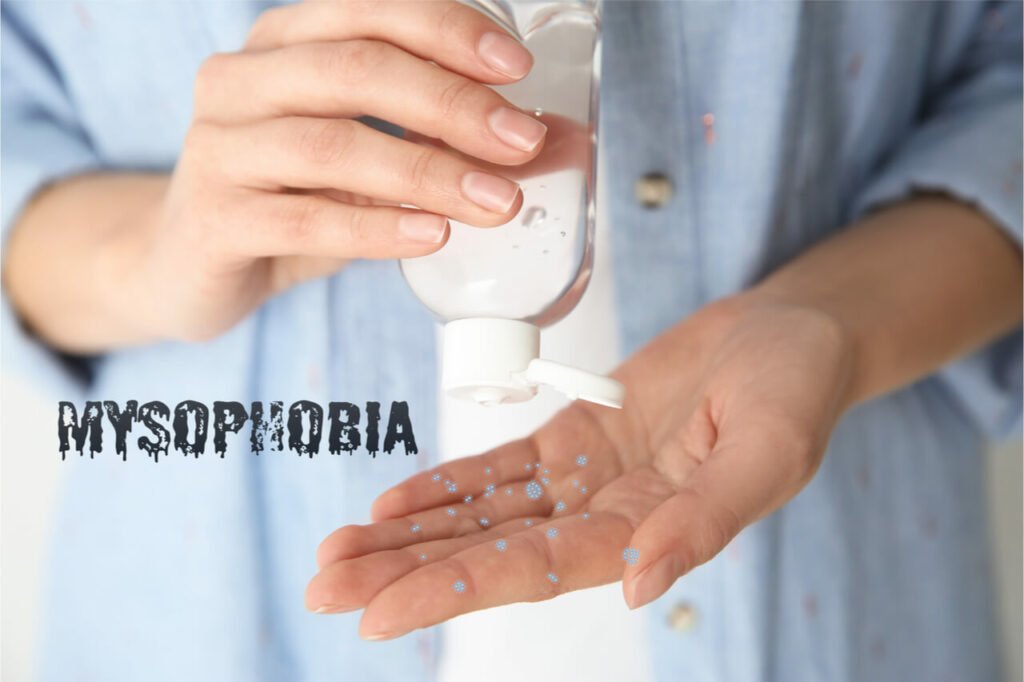Mysophobia or fear of contamination is a common phobia that affects many people with obsessive-compulsive disorder. Sometimes it is hard to cope with this condition. But there are ways to find practical solutions for mysophobia. For example, you can wear gloves or wash your hands a lot. In this article, we will talk about ways to deal with your fears. These are tricks and things you can do to help yourself feel better.
Contents
What is Mysophobia?

Mysophobia is an excessive fear of dirt or contamination. This phobia is germaphobia or bacteriophobia. This condition may cause people to wash their hands excessively and/or avoid contact with things that they think are dirty. Mysophobia is when someone is afraid of everything. They might stay away from people because they think they are dirty. Mysophobia can make a person feel afraid. They might have a panic attack. If they don’t have water or soap, they might get afraid.
Some Common Symptoms of Mysophobia
A phobia is hard to diagnose if it does not appear directly by coming in contact with other people. The symptoms are often worse during the winter months because colds and flu season are in full swing.
You may have mysophobia if you are afraid of germs. There are some common signs which may show that this condition is affecting you or someone close to you.
- Frequent hand-washing
- Avoiding touching doorknobs, railings, etc.
- Rejecting hugs or physical contact with others out of fear they might get “contaminated” by the germs on their body
- Overusing disinfectants/sanitizers for public bathrooms
- Refusal to eat foods touched by another individual (commonly found in children)
Causes for Mysophobia
Some people get this because they see someone who has dirt on them. Other people get it because they don’t spend a lot of time with friends and family. Some people might develop these types of thoughts after suffering from another mental disorder (e.g., OCD). These people might be born more predisposed towards developing anxiety issues later down the road as well. Some research shows that it is possible that the condition might occur due to genetics. That means if someone in your family has it, you are more likely to have it too. Experts believe this is true. They believe it is because when you grow up with someone, you are exposed to the same things. Siblings at the same school have a higher chance of getting sick because they usually live together.
Myths about Mysophobia

Some people have common myths about this condition. The myths may cause people to not get the help they need.
- Mysophobia is often confused with OCD (Obsessive Compulsive Disorder), but these two conditions are different from one another. The main difference between them is the content of the obsessions and compulsions. Someone who has OCD might not want to touch things that they think are dirty. People might wash their hands a lot or clean their homes a lot because they don’t want germs to make them sick. Someone with mysophobia fears getting dirty from germs on objects or other people.
- Another example is when someone feels like they need to keep all of their things in their house. This can make people feel really scared. They might think that new things will make their home dirty.
- Mysophobia can also be mistaken for other conditions, such as a social phobia or the fear of germs themselves. Someone who has mysophobia might feel that they will be dirty if they touch something. But this is different from an intense response like running away or fighting with someone.
How is Mysophobia Diagnosed?
If you think that you are feeling anxious, talk to a doctor who knows about anxiety. They will ask questions about your symptoms either through email or over the phone before making any diagnoses. If left untreated, mysophobia can lead to additional health problems down the line because people are afraid to seek the help they need.
Common Treatments

Before talking about treatment options, it’s important to understand how this condition is classified in the DSM-V (Diagnostic and Statistical Manual of Mental Disorders). Mysophobia is considered a “specific phobia” because there isn’t any social or occupational impairment with day-to-day life when someone suffers from it. The patient may have difficulty leaving their home or avoid being around other people if that place was particularly dirty at one point in time, but they wouldn’t be unable to hold down an occupation no matter what type of work they were doing.
Some common forms of treatment include exposure therapy, cognitive behavioral therapy, medication, etc. It’s important to talk to a medical professional before starting any new treatment plan because they can help you determine the best course of action for your specific needs.
Exposure Therapy
One of the most common forms of treatment for this condition is called exposure therapy. This type of treatment involves exposing a person to their fears gradually in order to help them acclimate and overcome them over time with proper support from a therapist or healthcare professional.
Cognitive Behavioral Therapy
Another form of treating this condition would be cognitive behavioral therapy, which looks at how someone’s thoughts influence their emotions and behaviors. The two types are either thought-stopping (where you change your belief system about germs) or systematic desensitization (gradually exposing yourself to something that triggers fear). Most therapists will combine both treatments while working one-on-one with the patient because they’re more effective when used together rather than independently.
Medication
In some cases, a medical professional may recommend medication as well. Benzodiazepines are often prescribed to help individuals relax and feel less anxious about their environment or situation at hand. In most cases, the person will need to take this type of drug for six weeks before continuing with talk therapy sessions because they can have adverse side effects if taken improperly or without supervision from a healthcare provider.
What Are Some Common Coping Methods For Mysophobia?
If someone is suffering from this condition, there are plenty of ways that they can learn how to cope with it. One method would be through “exposure therapy”, which involves exposing yourself (or your child) gradually over time to what causes them distress until their anxiety levels decrease significantly. Another option might be cognitive behavioral therapy, where you work on changing negative thoughts and behaviors in order to change mood/feelings during certain situations. This form of treatment has been shown effective across many types of mental disorders because it changes the way you think about something to better manage your emotions. Lastly, medication can help some patients relax and feel less anxious in certain situations so they have a higher chance of coping with their fears until therapy starts having an effect on them.
Action Steps

Educate Yourself
One of the hurdles to overcoming mysophobia is recognizing and correcting incorrect beliefs about germs and contamination. Reading or viewing films about how germs are a natural component of our bodies and our environment might aid in the management of fear and anxiety. Education may also teach you an understanding of basic hygiene standards, allowing you to compare your own actions to those recommended by a doctor.
Find Support
Millions of Americans have a specific phobia, so do some research in your area to see what support is available. Support groups in person and over the internet can provide people with the strength they need to overcome their germ fears. Also, don’t be ashamed to bring up your phobia with friends and family; tell them how they can help you manage it during therapy.
Recruit A Professional
It is difficult to get over a phobia without the help of someone who knows what they are doing. Talk to your doctor or mental health professional about what kind of therapy can help you reduce anxiety and obsessive behaviors that prevent you from living life. They may need to do more tests first to see if you have OCD or another type of anxiety disorder. If they don’t know how to ask for someone with experience working with mysophobia.
Conclusion
Mysophobia is the fear of germs and contamination. It can affect your personal hygiene, like not washing your hands or eating food that has been touched by someone else. When you have mysophobia it might be hard to go out in public because there are so many people with different germs around them. People may say they’re afraid of catching diseases from other people but what they really mean is that their brain causes them to feel uncomfortable when thinking about all the things on each person’s hands (or mouth).
The same thing happens with animals too; if a dog licks its front paws then walks across your floor, for example, some people will freak out at how gross this seems while others won’t mind as much. People with mysophobia are afraid of being around germs. Doctors have treatments that are not strong. They are afraid to take anti-anxiety drugs because they cause side effects.
If you are looking for affordable Online Counseling MantraCare can help: Book a trial therapy session


